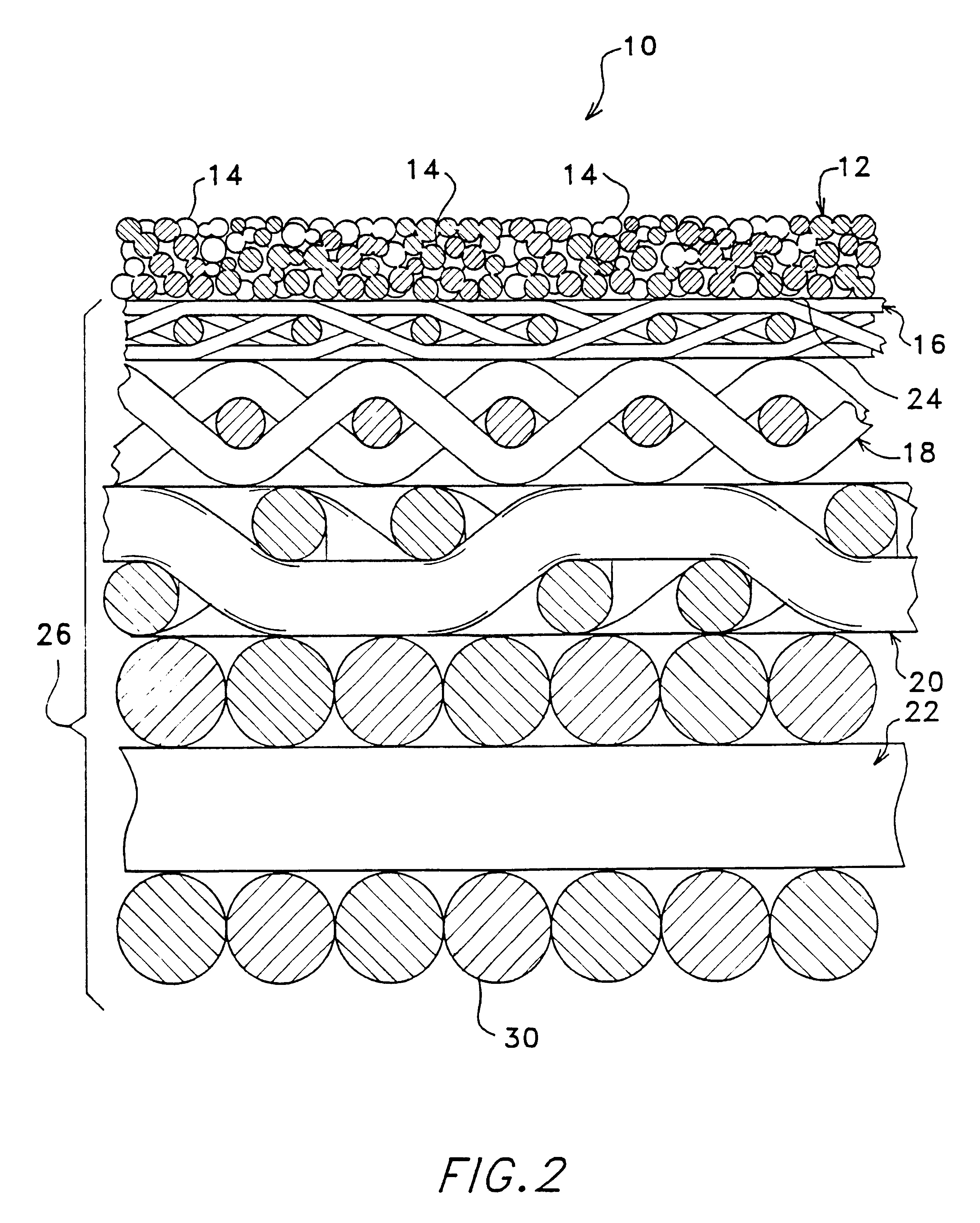Micro and ultrafilters with controlled pore sizes and pore size distribution and methods for making
- Summary
- Abstract
- Description
- Claims
- Application Information
AI Technical Summary
Benefits of technology
Problems solved by technology
Method used
Image
Examples
example 2
Processing a Two Layer, "Graded", Membrane by Dip Coating
In addition to the 10 micron powder suspension formulated in Example 1 above. 316l, stainless steel powder with a particle size specification of minus 5 microns was formulated with the B73210 binder system and toluene in the ratio of 62 weight percent powder, 32 weight percent binder and 6 weight percent toluene. This mixture was ball milled for 6 hours in order to provide a homogenous suspension.
Substrate cleaning and masking was performed as described above in Example 1
A coating / film of the 10 micron suspension was deposited on the substrate using the dipping procedure described above in Example 1. This deposited film was allowed to dry for approximately 20 minutes at room temperature. After drying all additional film was deposited on the initial layer by dipping the substrate with the dried film into the 5 micron suspension. This dipping procedure was the same as previously described.
The second layer (5 micron suspension) w...
example 3
Processing a Membrane by Tape Casting
316L stainless steel powder with a particle size specification of minus 10 microns was formulated with the B73210 binder system in the ratio of 70 weight percent powder and 30 weight percent binder. This mixture was mixed through the use of a SPEX vibratory mill for 8 minutes in order to provide a homogenous suspension.
A "cast on glass" technique was used. Prior to casting, the glass was treated with a coating of lecithin to facilitate easy removal of the deposited "tape." Tape casting was performed using a hand held doctor blade to control the slurry thickness. The blade height was set at 0.01 in. This resulted in a green tape thickness on the order of 0.003 in. (75 .mu.m) after the elimination of volatile solvents. After drying, the green tape was removed Rom be glass casting surface and cut into one inch squares.
Substrates were modified 4-layer Purolator Poroplate laminate cut to 1.0 inch squares. The substrate cleaning procedures described in...
example 4
Processing a Membrane by Screen Printing
316L stainless steel powder with a particle size specification of minus 10 microns was formulated with ethyl cellulose and pine on to form the screen printing paste. Pine oil and ethyl cellulose were first formulated in a ratio of 9 to 1 respectively by weight. This "binder" was mixed by hand periodically over the time tame of 24 hours in order to ensure homogeneity. The 316L powder was then added to the binder in the ratio of 70% by weight. Mixing was once again performed by hand, periodically, over a 24 hour time period resulting in a "paste" suitable for printing.
Substrates were modified 4-layer Purolator Poroplate laminate out to 1.0 inch squares. The substrate cleaning procedures described above in Example 1 were followed.
A 0.75 in.sup.2 pattern was printed on the substrate using the 316L paste. After printing a layer, the substrate was heated to 100.degree.-150.degree. C. for several minutes on a hot plate in order to volatize the solven...
PUM
| Property | Measurement | Unit |
|---|---|---|
| Pore size | aaaaa | aaaaa |
| Percent by mass | aaaaa | aaaaa |
| Percent by mass | aaaaa | aaaaa |
Abstract
Description
Claims
Application Information
 Login to View More
Login to View More - R&D
- Intellectual Property
- Life Sciences
- Materials
- Tech Scout
- Unparalleled Data Quality
- Higher Quality Content
- 60% Fewer Hallucinations
Browse by: Latest US Patents, China's latest patents, Technical Efficacy Thesaurus, Application Domain, Technology Topic, Popular Technical Reports.
© 2025 PatSnap. All rights reserved.Legal|Privacy policy|Modern Slavery Act Transparency Statement|Sitemap|About US| Contact US: help@patsnap.com



